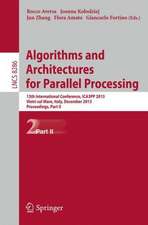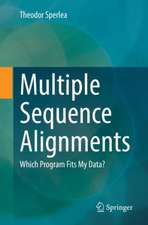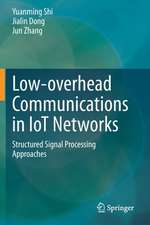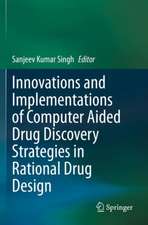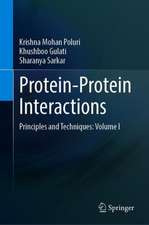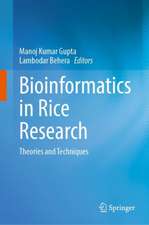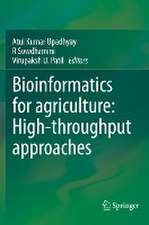Computational Intelligence in Protein-Ligand Interaction Analysis
Autor Bing Wang, Peng Chen, Jun Zhangen Limba Engleză Paperback – 25 mar 2024
- Presents a guide to computational techniques for protein-ligand interaction analysis
- Guides researchers in developing advanced computational intelligence methods for the protein-ligand problem
- Identifies appropriate computational tools for various problems
- Demonstrates the use of advanced techniques such as vector machine, neural networks, and machine learning
- Offers the computational, mathematical and statistical skills researchers need
Preț: 909.87 lei
Preț vechi: 1193.98 lei
-24% Nou
Puncte Express: 1365
Preț estimativ în valută:
174.16€ • 189.24$ • 146.39£
174.16€ • 189.24$ • 146.39£
Carte tipărită la comandă
Livrare economică 14-28 aprilie
Preluare comenzi: 021 569.72.76
Specificații
ISBN-13: 9780128243862
ISBN-10: 0128243864
Pagini: 278
Ilustrații: 60 illustrations (30 in full color)
Dimensiuni: 152 x 229 mm
Greutate: 0.46 kg
Editura: ELSEVIER SCIENCE
ISBN-10: 0128243864
Pagini: 278
Ilustrații: 60 illustrations (30 in full color)
Dimensiuni: 152 x 229 mm
Greutate: 0.46 kg
Editura: ELSEVIER SCIENCE
Cuprins
1. Computational intelligence methods in protein-ligand interactions
2. Random forest method for predicting protein ligand-binding residues
3. Encoders of protein residues for identifying protein-protein interacting residues
4. Identification of hot spot residues in protein interfaces from protein sequences and ensemble methods
5. Semi-supervised prediction of protein interaction sites from unlabeled sample information
6. Developing computational model to predict protein-protein interaction sites based on XGBoost algorithm
7. Evolutional algorithms and their applications in protein long-range contact prediction
8. A novel robust geometric approach for modelling protein-protein interaction networks
9. Prediction of protein-protein interactions from amino acid sequences with ensemble extreme learning machines and principal component analysis
10. Ensemble learning-based prediction on drug-target interactions
11. Convolutional neural networks for drug-target interaction prediction
12. Ensemble learning methods for drug-induced liver injury identification
13. Database construction for mutant protein interactions
14. A linear programming computational framework integrates phosphor-proteomics and prior knowledge to predict drug efficacy
2. Random forest method for predicting protein ligand-binding residues
3. Encoders of protein residues for identifying protein-protein interacting residues
4. Identification of hot spot residues in protein interfaces from protein sequences and ensemble methods
5. Semi-supervised prediction of protein interaction sites from unlabeled sample information
6. Developing computational model to predict protein-protein interaction sites based on XGBoost algorithm
7. Evolutional algorithms and their applications in protein long-range contact prediction
8. A novel robust geometric approach for modelling protein-protein interaction networks
9. Prediction of protein-protein interactions from amino acid sequences with ensemble extreme learning machines and principal component analysis
10. Ensemble learning-based prediction on drug-target interactions
11. Convolutional neural networks for drug-target interaction prediction
12. Ensemble learning methods for drug-induced liver injury identification
13. Database construction for mutant protein interactions
14. A linear programming computational framework integrates phosphor-proteomics and prior knowledge to predict drug efficacy
















